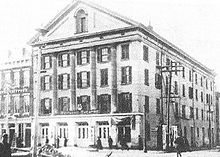
Richmond is the capital city of the Commonwealth of Virginia in the United States. Incorporated in 1742, Richmond has been an independent city since 1871. The city's population in the 2020 census was 226,610, up from 204,214 in 2010, making it Virginia's fourth-most populous city. The Richmond metropolitan area, with over 1.3 million residents, is the Commonwealth's third-most populous.

Robert Mills was a South Carolina architect and cartographer known for designing both the first Washington Monument, located in Baltimore, Maryland, as well as the better known monument to the first president in the nation's capital, Washington, DC. He is sometimes said to be the first native-born American to be professionally trained as an architect. Charles Bulfinch of Boston perhaps has a clearer claim to this honor.

Eliza Poe was an English actress and the mother of the American author Edgar Allan Poe.

The Iroquois Theatre fire was a catastrophic building fire in Chicago, Illinois, that broke out on December 30, 1903 during a performance attended by 1,700 people. The fire caused 602 deaths and 250 non-fatal injuries. It ranks as the worst theater fire in the United States, surpassing the carnage of the Brooklyn Theatre fire of 1876, which claimed at least 278 lives.

The Virginia State Capitol is the seat of state government of the Commonwealth of Virginia, located in Richmond, the state capital. It houses the oldest elected legislative body in North America, the Virginia General Assembly, first established as the House of Burgesses in 1619.
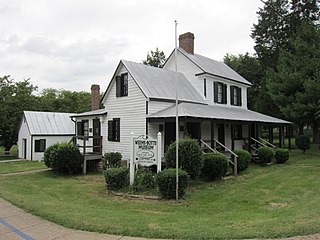
Weems–Botts House Museum is a small historic museum in Dumfries, Virginia, United States. The museum includes the landmark Weems–Botts House on the corner of Duke Street and Cameron Street and the Weems–Botts Museum Annex, which houses the Lee Lansing Research Library and Archive, located at 3944 Cameron Street. Both buildings are located in Merchant Park. The park's bandstand commemorates William Grayson, one of Prince William County's most respected citizens and one of Virginia's first senators. The museum tour showcases the history of Dumfries, Virginia's oldest chartered town, and people associated with the house, including Mason Locke "Parson" Weems, and attorney Benjamin Botts.

Abraham Bedford Venable was a Virginia lawyer, planter and politician who served in the U.S. House of Representatives and briefly as U.S. Senator, as well as in the Virginia House of Delegates.
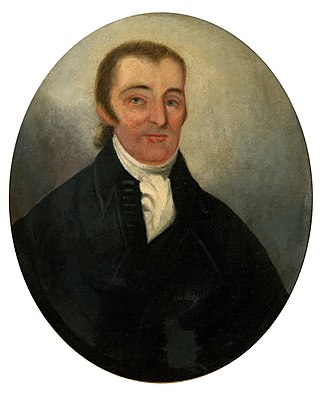
George William Smith was a Virginia lawyer and politician who served several terms in the Virginia House of Delegates and was twice the acting governor of the state before then being elected as the 17th Governor of Virginia. His term as elected governor was short and ended with his death in the Richmond Theatre fire of 1811.
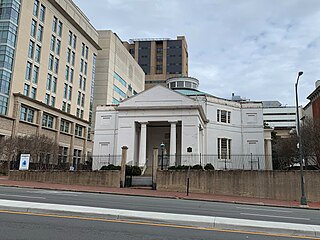
Monumental Church is a former Episcopal church at 1224 E. Broad Street between N. 12th and College streets in Richmond, Virginia. Designed by architect Robert Mills, it is one of America's earliest and most distinctive Greek Revival churches. It is listed on the National Register of Historic Places, has been designated as a National Historic Landmark and is located in the Court End historic district.
Historic Richmond Foundation was founded in 1956 by Elisabeth Scott Bocock, Louise Catterall, Mary Wingfield Scott, Dr. Wyndham B. Blanton, and others in order to save the Church Hill area surrounding St. John's Church. The mission of Historic Richmond is "to shape the future of Richmond by preserving our distinctive historic character, sparking revitalization and championing our important architectural legacy".
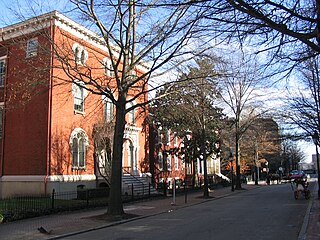
Court End is a neighborhood in Richmond, Virginia, that sits to the north of the Capitol Square and East Broad Street. It developed in the Federal era, after Virginia's capital moved from Williamsburg.

The Virginia Ratifying Convention was a convention of 168 delegates from Virginia who met in 1788 to ratify or reject the United States Constitution, which had been drafted at the Philadelphia Convention the previous year.

John Minor Botts was a nineteenth-century politician, planter and lawyer from Virginia. He was a prominent Unionist in Richmond, Virginia, during the American Civil War.

St. James's Episcopal Church is the third oldest Episcopal congregation in Richmond, Virginia. Only the older St. John's Episcopal Church on Church Hill also remains an active congregation.
Charleston Theatre, also called Broad Street Theatre was a theatre in Charleston, South Carolina between 1794 and 1833. It was the first permanent theatre in Charleston, the first with a permanent staff, and the only theater for much of its duration. It was succeeded by the New Charleston Theatre (1837–1861).
Thomas Wade West, was an American actor and theatre manager.

Olympic Theatre was the name of five former 19th and early 20th-century theatres on Broadway in Manhattan and in Brooklyn, New York.
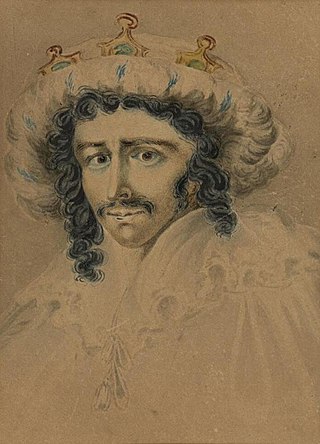
The Anthony Street Theatre was an early New York City theatre which operated intermittently from 1812 to 1821. It opened as the Olympic Theatre in May 1812 and had multiple names during its brief existence.
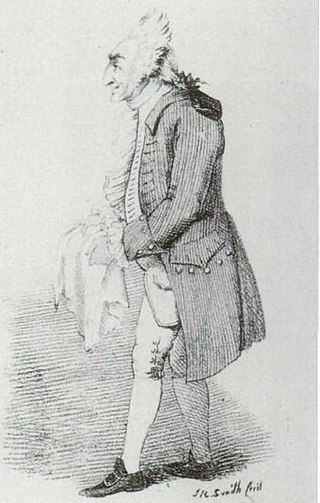
William Twaits was a British singer, dancer and actor-manager whose career was mostly in the United States in the early 19th-century.
The Richmond Theatre was the name of three theatres located in Richmond, Virginia. The first theatre was originally established in 1786 as the Academy of Fine Arts and Sciences of the United States or Quesney's Academy. It was renamed the Richmond Theatre after it came under the management of Thomas Wade West and John Bignall. It was destroyed by fire in 1798. The second Richmond Theatre opened in 1806 on the same site and was destroyed by fire in 1811. The 1811 Richmond Theatre fire is considered a significant disaster in the history of the city, and was described by historian Meredith Henne Baker as "early America's first great disaster".



